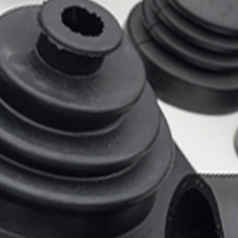
Rubber Compound Manufacturing
In its native form, pure rubber has little use in manufacturing. Rubber must be mixed with other materials to develop the properties required for each specific product and application, a process called rubber compound manufacturing.The factory must precisely and consistently follow laboratory specifications when blending the compound. Processing includes:
- Roll milling, or mixing the primary material base
- Computer controlled addition of additional ingredients, in batches for quality control
- Final compound formed into strips and cooled
Once cooled, manufacturers take test samples from each batch to ensure quality and consistency. Then they transfer batches to the lines for molding or extrusion.
Rubber Compound Manufacturing Using Injection Molding
First, injection molding is excellent for fast, high-volume production. The injection molding process uses a closed mold, which is injected with molten compound in sufficient volume and with sufficient pressure to completely fill the mold cavities. The material cures in the mold for a pre-determined amount of time. Next, manufacturers open the mold and eject the parts. Then the cycle repeats.
Compression Molding
In contrast, compression molding is a slower process, suitable for lower-volume production than injection molding to minimize tooling costs. In compression molding, manufacturers load material “blanks” into the cavities of an open mold. Next, they close the mold and press the rubber compound in a hydraulic press, causing the material to fill the mold cavities. As with injection molding, the parts cure in the mold for a pre-determined amount of time. Finally, the mold is opened, and the parts are ejected. Compression molding is not recommended for complex shaped parts.
Extrusion in Rubber Compound Manufacturing
Manufacturers use extrusion for items too long or large for injection or compression molding, and requires very long lines. Extruding involves feeding strips of rubber compound into the extruder, which is then forced out through a die. Continuous extruded material passes through a long heating chamber at closely controlled temperature and speed, causing it to cure. Next it is cut, rolled, or otherwise prepared for testing, shipping or other secondary processing. Manufacturers often use extrusion to create blanks for compression molding.
Choosing the Right Rubber Compound Manufacturing Process
Overall, injection molding and extrusion and are highly repeatable processes. They yield minimal waste or scrap and are well-suited for mass production. You should make your decision about the ideal process on a case-by-case basis, considering the material, shape, quantities and other factors.
Rubber Compound Manufacturing Advice
From automotive parts to toys to packaging, Revotech’s extensive experience in these processes using different rubber compounds can save you time. Need help with a project? Please drop us a line. We look forward to helping you with your product and process decisions.
